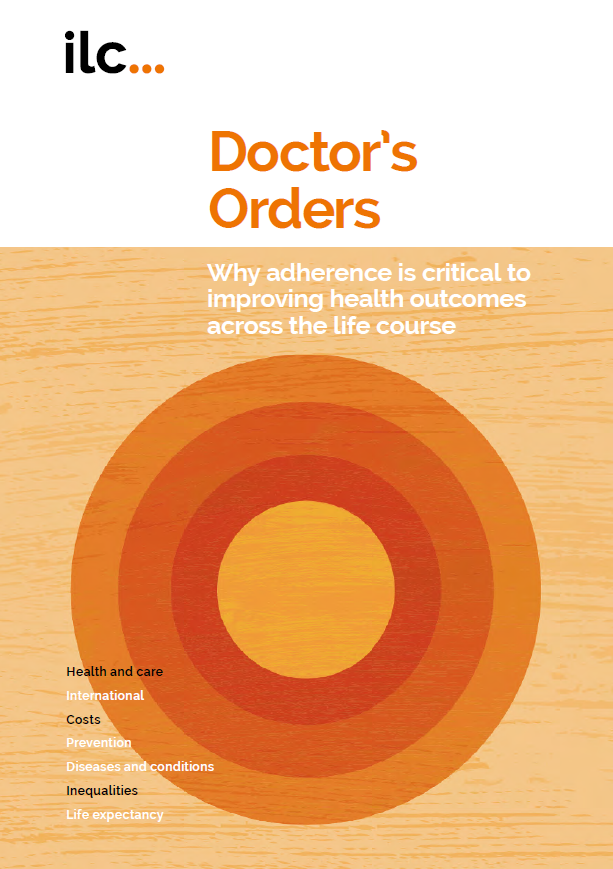Doctor’s orders: Why adherence is critical to improving health outcomes across the life course
Nearly half of all adults and approximately 8% of children (aged 5-17) worldwide have a chronic condition. Yet, studies have consistently shown that adherence to medication is poor; estimates range from under 80% to under 50%, with an average of 50%.
The World Health Organization (WHO) estimates that adherence to medication for chronic conditions is as low as 50% in developed countries and even lower in developing countries.
Non-adherence is also expensive for governments. Figures suggest that the annual costs of medication non-adherence range from $100 billion to $290 billion in the USA, €125 billion across Europe and AU$7 billion in Australia.10% of hospitalisations in older people are attributed to non-adherence. The typical non-adherent patient requires three extra medical visits per year, leading to increased treatment costs of $2,000 per annum.
We could see a considerable improvement in health outcomes (and consequently longevity), not only by developing new drugs, but by helping people adhere to existing treatment regimens that have already been researched, tested and prescribed for them.
But adherence isn’t usually prioritised by governments, health providers or healthcare professionals (HCPs). Adherence isn’t measured at a national level for any disease, apart from in Sweden where hypertension is recorded. And as governments don’t prioritise adherence, health providers aren’t measured or incentivised for improving it, meaning HCPs may not have the time and resources (or reminders) to focus on it during consultations.
Supporting adherence to existing treatment regimes in people with chronic conditions, and those at risk of developing them, as well as encouraging them to make changes to their lifestyles, offers a substantial reward. It’s time to claim it.
Key recommendations
Democratising access
Governments should:
- Fund annual medicine reviews to help people with chronic conditions with decision making and any identified gaps in care, and report on the number of medicine reviews conducted every year across different demographic groups
- Prevent co-payments from causing a barrier to adherence, as evidence shows they can hinder people from taking prescribed medication
- Invest in HCP training programmes on behaviour change to supply workers with the requisite skills and knowledge to support adherence to medication regimes and lifestyle behaviour programmes
Universities should:
- Ensure that undergraduate curricula for all HCPs include an adherence topic that communicates the importance of adherence for the health outcomes of individuals, and helps HCPs to implement effective behaviour change methods
Inspiring and engaging
Governments should:
- Promote and prioritise adherence as an effective disease management tool, by including it in national chronic disease strategies; for example, those for CVD, osteoporosis and diabetes
- Set metrics for acceptable adherence rates, and measure and report on adherence rates for chronic conditions, including CVD, diabetes and osteoporosis, at a national (or subnational) level
- Establish behavioural insight teams with a focus on health, and research the effect of using different incentives to encourage people with chronic conditions to adhere to medications and lifestyle changes
- Expand the role of pharmacists, with concomitant resources and funding, to allow these professionals to support adherence, monitor for signs of non-adherence and conduct medicine reviews
WHO should:
- Publish annual adherence rate results, with comparisons between countries
Providers should:
- Use learnings from the research on the different adherence trajectories for different groups with chronic conditions to develop tailored interventions for people at greater risk of non-adherence
- Explore using the COM-B model to develop interventions that support individuals to adhere to their medical directions
Better use of technology
Governments should:
- Invest in research to test how technology, including wearables, can improve adherence
- Invest in the collection and management of electronic health records, including supporting deidentified assessments of patterns of use and care
- Ensure that people with chronic conditions can view their health records easily and that records incorporate information and advice to be used as a tool to help with medication adherence and management
Healthcare providers should:
- Build on the increased use of online consulting during the pandemic to deliver more regular virtual follow-up reviews to check medication adherence and management

